Tate Liverpool presents the first exhibition to survey an unexplored yet significant element of Francis Bacon’s work. Considered one of Britain’s greatest modern painters, Bacon (1909 – 1992) often painted an architectural, ghost like framing device around his subjects that structure many of his iconic paintings. Francis Bacon: Invisible Rooms addresses some of Bacon’s most powerful works with a renewed focus on their spatial structure.
A technique introduced by the artist in the 1930s, Bacon used a barely visible cubic or elliptic cage around the figures depicted to create his dramatic compositions. The exhibition will feature approximately 35 large-scale paintings and works on paper surveying the variety of Bacon’s painterly compositions united by this common motif.
Francis Bacon: Invisible Rooms traces the use of this architectural structure throughout his career from early works made in the 1950s including Study for a Portrait 1952 (Tate) and Chimpanzee 1955 (Staatsgalerie Stuttgart). After a short time in the 1960s when the technique was peripheral to his work it comes back to centre stage in the 1970s & 80s. It is at this time that Bacon’s use of colour turns the earlier suggestion of a room into a more theatrical set, resulting in a finely struck balance between action and empty space demonstrated in Three Figures and Portrait 1975 (Tate). Beyond the cages that recur in Bacon’s paintings, the exhibition also investigates the crucifix as a bodily architectural structure, the governing rule of several of Bacon’s major triptychs including Three Studies for Figures at the Base of a Crucifixion c.1944 (Tate).
Taking as a point of departure a seminal essay by Gilles Deleuze, Francis Bacon: The Logic of Sensation 1981, the exhibition highlights the role of Bacon’s approach to space, which the French philosopher interpreted as one of the defining forces of his works. Bacon’s imaginary chambers emphasise the isolation of the represented figures and bring attention to their psychological condition; the act of placing the sitters in ‘invisible rooms’ guides the focus of attention towards the existential concerns of the painting.
While it can be said that architectural structures define an inside and an outside, Bacon mastered the metaphorical, spatial and psychological slipperiness of boundaries; this exploration is among the most important and effective elements at play in his works.
Francis Bacon: Invisible Rooms is organized by Tate Liverpool and Staatsgalerie Stuttgart. The exhibition is curated by Kasia Redzisz, Senior Curator with Lauren Barnes, Assistant Curator at Tate Liverpool. Francis Bacon: Invisible Rooms will tour to Staatsgalerie Stuttgart (7 October 2016 – 8 January 2017).
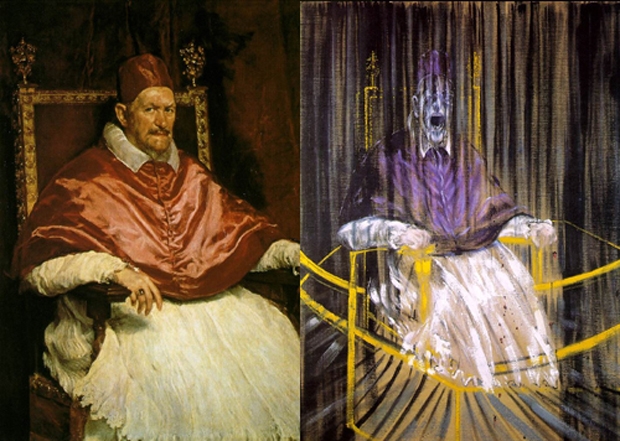 STUDY AFTER VELÁZQUEZ?S PORTRAIT OF POPE INNOCENT X IS A 1953 PAINTING BY FRANCIS BACON. THE WORK SHOWS A DISTORTED VERSION OF THE PORTRAIT OF INNOCENT X PAINTED BY THE SPANISH ARTIST DIEGO VELÁZQUEZ IN 1650.
STUDY AFTER VELÁZQUEZ?S PORTRAIT OF POPE INNOCENT X IS A 1953 PAINTING BY FRANCIS BACON. THE WORK SHOWS A DISTORTED VERSION OF THE PORTRAIT OF INNOCENT X PAINTED BY THE SPANISH ARTIST DIEGO VELÁZQUEZ IN 1650.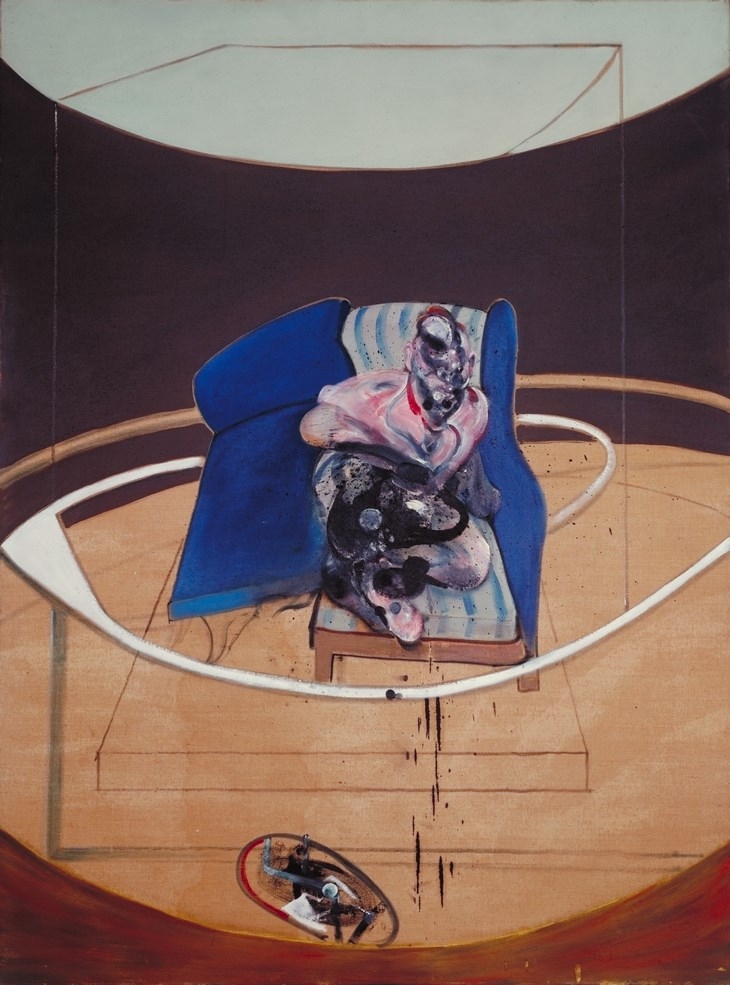 FRANCIS BACON, 1909-1992 STUDY FOR PORTRAIT ON FOLDING BED 1963 OIL PAINT ON CANVAS 1981 X 1473 MM (C) ESTATE OF FRANCIS BACON
FRANCIS BACON, 1909-1992 STUDY FOR PORTRAIT ON FOLDING BED 1963 OIL PAINT ON CANVAS 1981 X 1473 MM (C) ESTATE OF FRANCIS BACON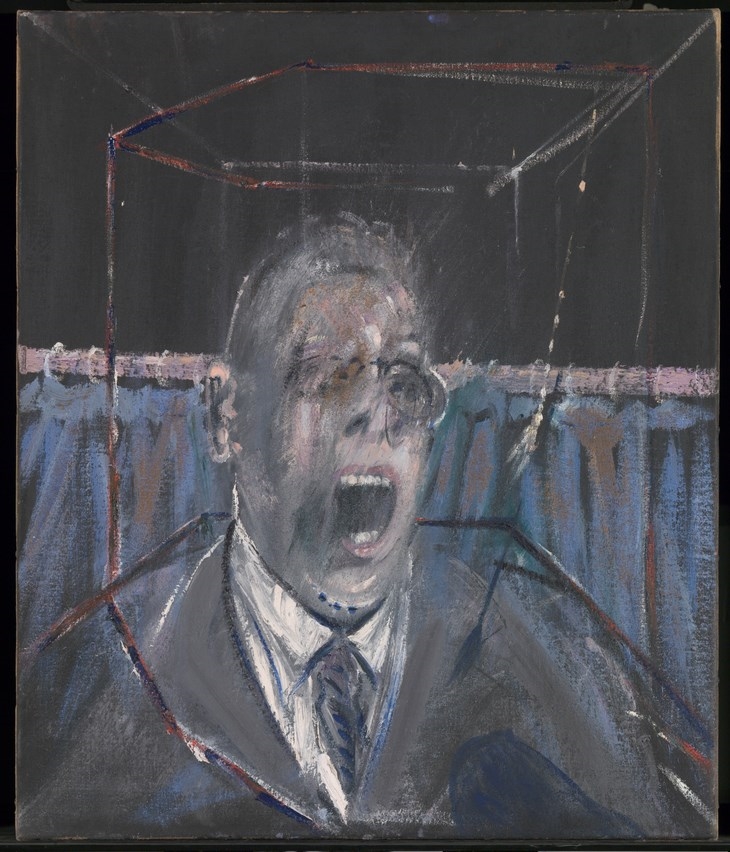 FRANCIS BACON, 1909-1992 STUDY FOR A PORTRAIT 1952 OIL PAINT AND SAND ON CANVAS 661 X 561 X 18 MM (C) ESTATE OF FRANCIS BACON. ALL RIGHTS RESERVED, DACS 2015
FRANCIS BACON, 1909-1992 STUDY FOR A PORTRAIT 1952 OIL PAINT AND SAND ON CANVAS 661 X 561 X 18 MM (C) ESTATE OF FRANCIS BACON. ALL RIGHTS RESERVED, DACS 2015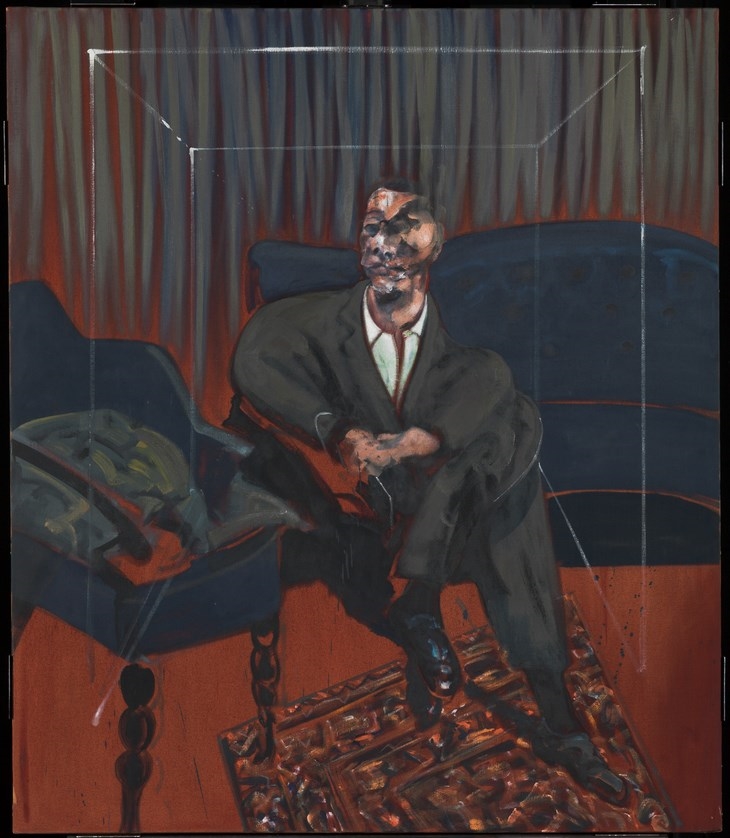 FRANCIS BACON, 1909-1992 SEATED FIGURE 1961 OIL PAINT ON CANVAS 1651 X 1422 MM (C) ESTATE OF FRANCIS BACON
FRANCIS BACON, 1909-1992 SEATED FIGURE 1961 OIL PAINT ON CANVAS 1651 X 1422 MM (C) ESTATE OF FRANCIS BACON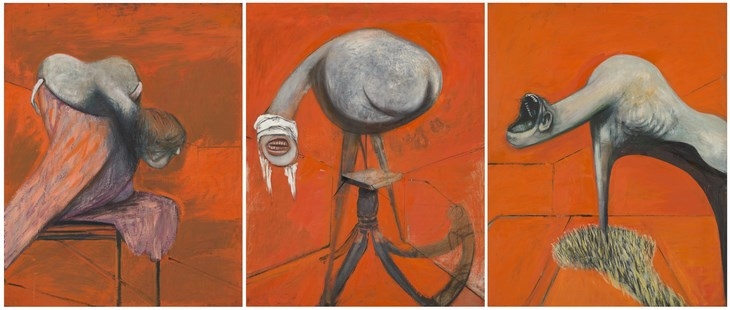 FRANCIS BACON, 1909-1992 THREE STUDIES FOR FIGURES AT THE BASE OF A CRUCIFIXION C.1944 OIL PAINT ON 3 BOARDS EACH: 940 X 737 MM (C) TATE
FRANCIS BACON, 1909-1992 THREE STUDIES FOR FIGURES AT THE BASE OF A CRUCIFIXION C.1944 OIL PAINT ON 3 BOARDS EACH: 940 X 737 MM (C) TATEREAD ALSO: SNØHETTA IS MOVING TO COPENHAGEN / EXHIBITION